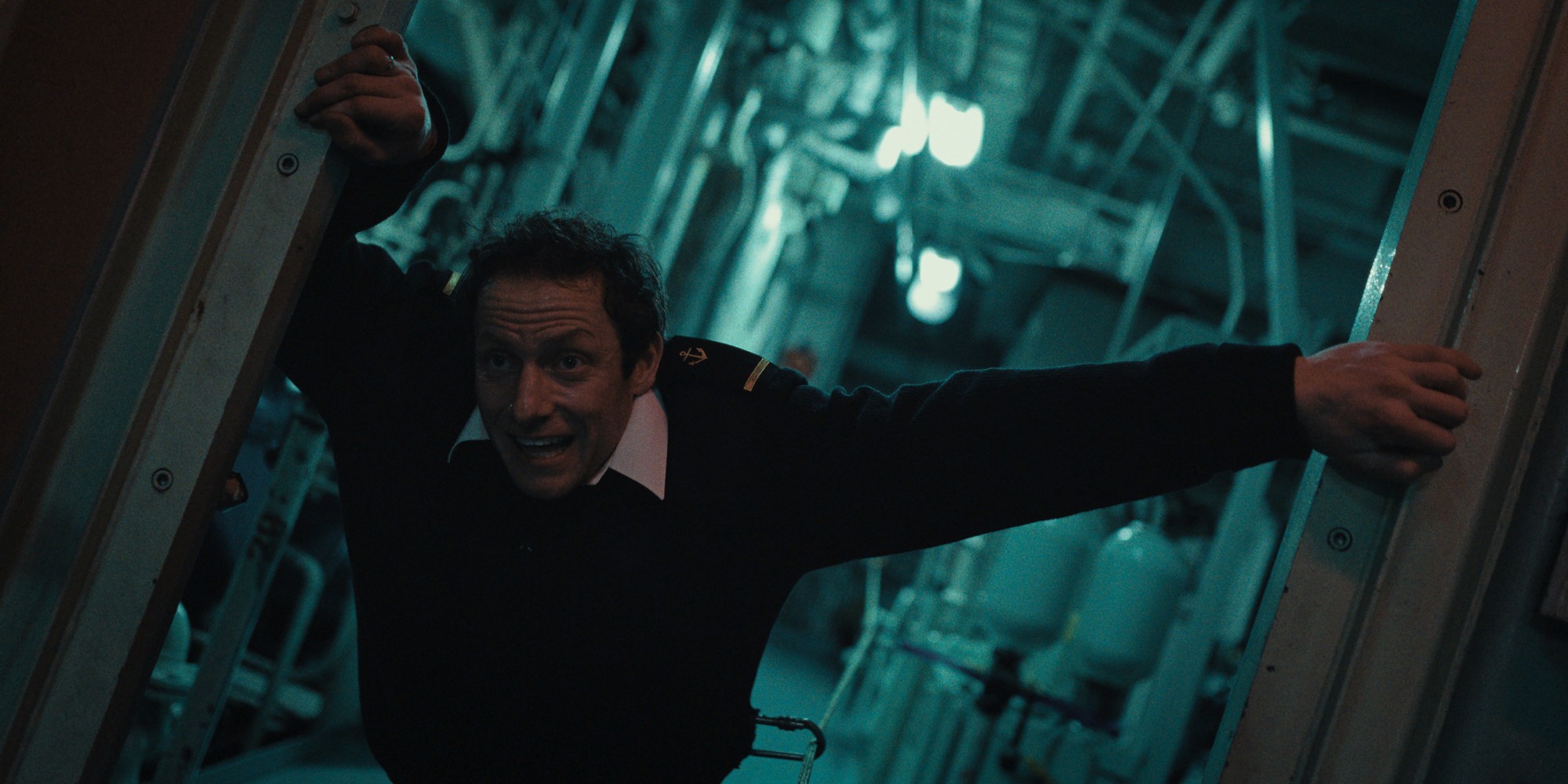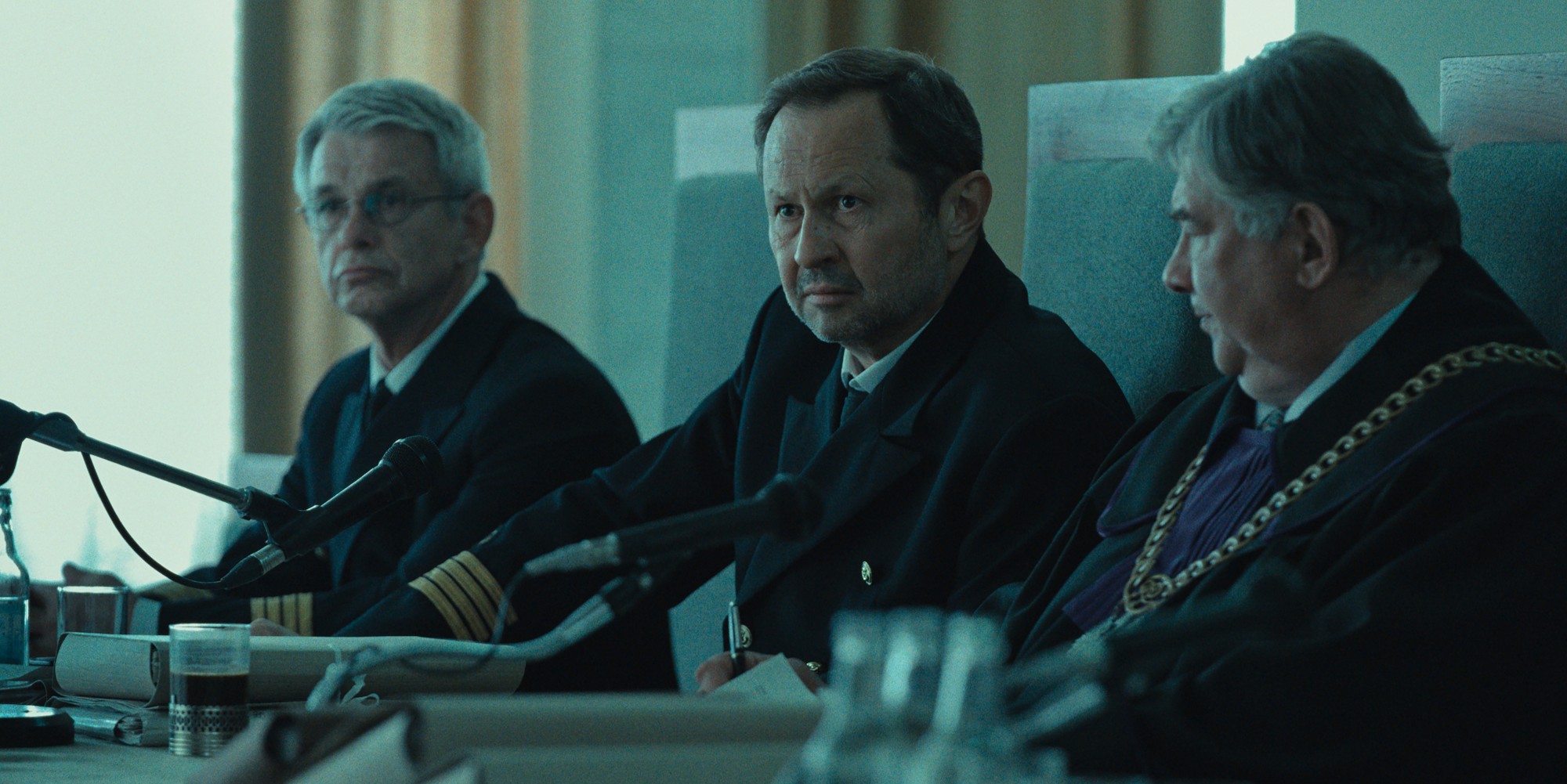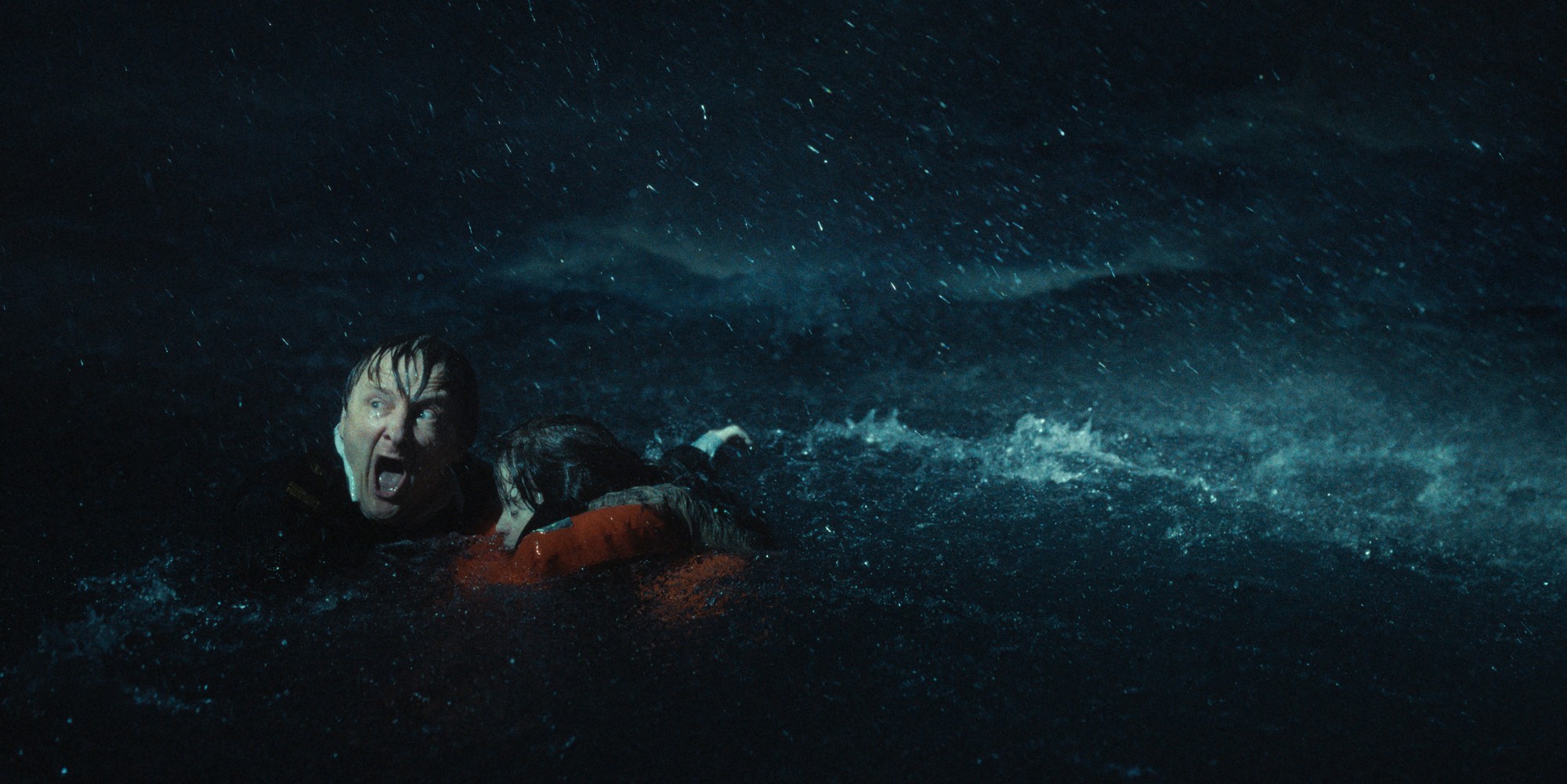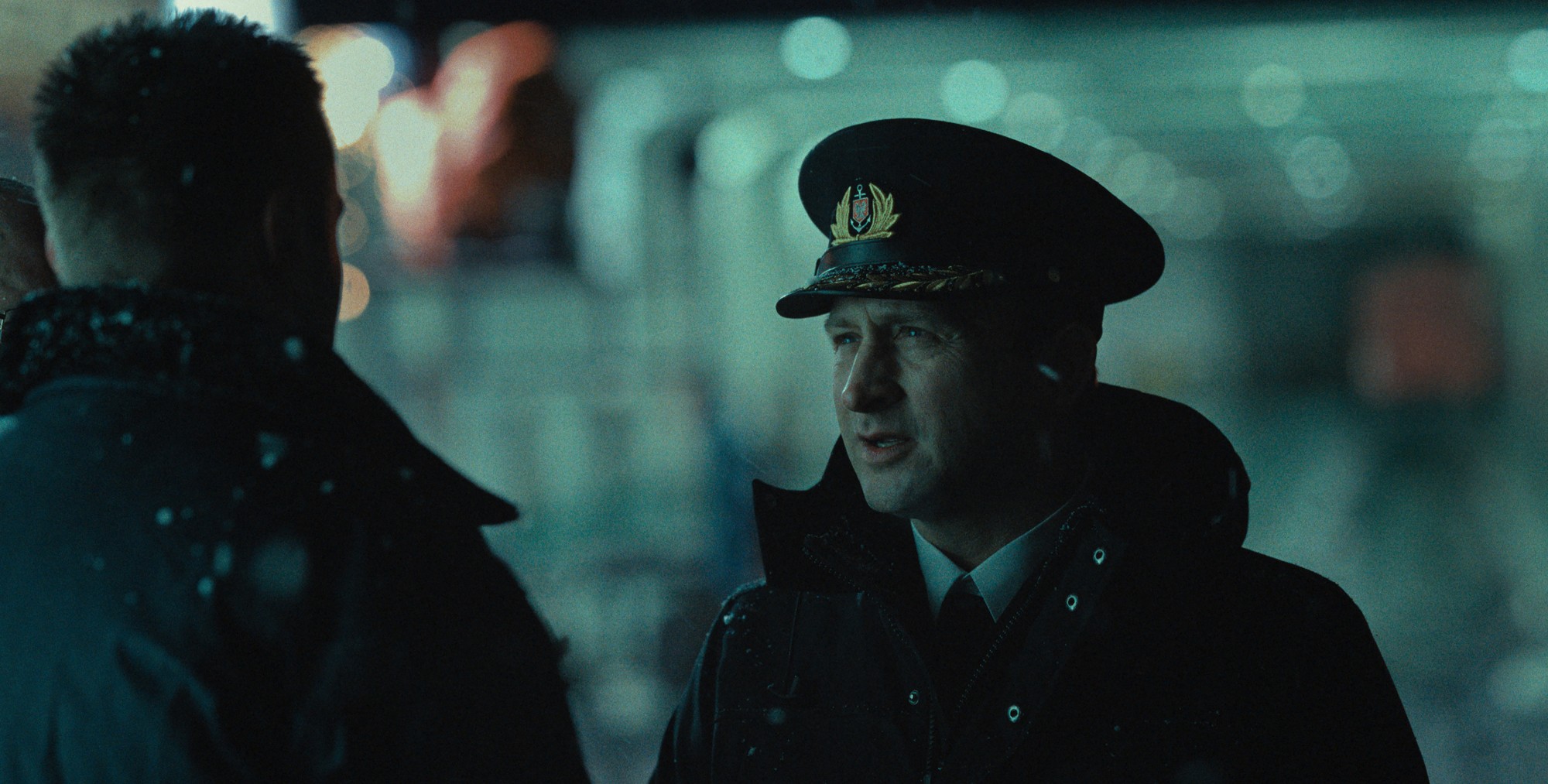Helmed by Jan Holoubek, Netflix’s ‘Heweliusz‘ tracks the fateful night of January 13, 1993, wherein the eponymous ferry is caught in a violent storm that turns its routine voyage into a battle for survival. From there, the show also examines the effect of the maritime accident on the families left behind, who are forced to bear fear, paranoia, and loss. When an off-duty captain learns of the tragedy, he makes it his life’s mission to dive headfirst into the investigation and search out the truth, both for the dignity of the people who died and to bring closure to those who managed to survive. However, the journey is laden with unforeseen obstacles, with shadowy powers threatening to snatch control of the narrative at every turn. The Polish historical disaster drama series relies on extensive research to give depth to its story. To that end, Navica Ferries and Kempen stand out as some of the most vital additions to the show. SPOILERS AHEAD.
Navica Ferries is the Dramatized Equivalent of the Real Owner of Heweliusz
As the company that owns Heweliusz within the series, Navica Ferries appears to be writer Kasper Bajon’s creative rendition of Polish Ocean Lines, the real-life owner of the eponymous ferry. Although the connection has not been confirmed as of writing, the similarities between the two companies, as well as their narrative significance, strongly suggest a link. Polish Ocean Lines, also known as Polskie Linie Oceaniczne, was created in 1951 as a state-owned merger of three smaller companies. At its peak in the 1970s, the company employed around 10,000 people, with 176 ships under its belt. By the 1990s, however, the company underwent major restructuring, resulting in a reduced employee base and a reduced fleet size. By 1993, Heweliusz had been in service for over fifteen years, and that fact is carried over in the shipping company’s television counterpart.

A significant portion of the show explores the exact cause behind the Heweliusz disaster, and the real-life rulings by the Maritime Chamber held the ferry’s deceased captain, Andrzej Ułasiewicz, primarily responsible. At the same time, however, several details about Polish Ocean Lines’ questionable handling of the vessel also came to light. Despite Heweliusz’s history of major accidents and damages, the company reportedly employed an illegal method for carrying out renovations and repairs, resulting in an entire deck being filled with over 60 tons of concrete. In the show, a similar claim is made about Navica Ferries, alongside accusations of pressuring the captain to delay the ferry’s departure on the night of January 13, 1993. Although real-life records state the official reason as repairs to Heweliusz’s stern gate, the show introduces its own fictional touch, with the last-minute inclusion of military-approved trucks, which add another 30 tons to the vessel.
Polish Ocean Lines Was Revealed to be a Major Reason Behind Heweliusz’s Capsizing
In the years since the ferry disaster, numerous reports have speculated about the trucks on Heweliusz’s final voyage carrying suspicious cargo, citing discrepancies between the weight records submitted by the railwaymen and the ones present in the waybill. In the show, the protagonist, Piotr Binter, claims that Navica Ferries was working with the government to illegally smuggle weapons and ammunition, which seemingly explained the excessive red tape surrounding the case. In real life, a vessel owned by Polish Ocean Lines, named Inowrocław, was found to be carrying rifles and grenades by English customs. However, since there are no existing records of Heweliusz’s connection to these criminal activities, any connection made by the show’s creators is most likely a creative reimagining of events, with no parallels with reality.

In the show, Navica Ferries is portrayed as a corrupt organization that sways the Maritime Chamber’s attention away from the company’s operational irregularities. To that end, while the ruling superficially includes their faults in poorly managing and repairing the ferry, the bulk of the blame is pinned on Captain Ułasiewicz. Despite being a dramatized retelling of the original hearings, ‘Heweliusz’ likely borrows heavily from the real-life investigative proceedings, which reached a similar conclusion in 1996. However, four years later, an association of widows and family members of the deceased crew filed a complaint with the European Court of Human Rights, citing a biased judgment by the Maritime Chamber. On March 3, 2005, the court ruled in the families’ favour, granting compensation for their suffering and calling for amendments to Maritime laws. Later investigations found the shipowners to be the most responsible in the Heweliusz tragedy.
Kempen is a Fictional German Ship That Flips the Story on its Head
Unlike Navica Ferries, which appears to have a clear real-life antecedent, Kempen is likely the name of a fictional German ship penned by Kasper Bajon to enrich the narrative. In the final stretch of the show, Kempen is revealed to be a game-changing presence, partially responsible not only for Heweliusz’s capsizing but also for the brutal deaths of some evacuees. However, in real life, there are no records of any ship entering a collision course with Heweliusz during the storm. While the ferry did reportedly reposition itself, the maneuver has been explained as the captain’s attempt to fix the ferry’s tilt by redistributing the wave and wind forces. As such, Kempen’s involvement in the disaster is a creative reimagining that opens the doors to many new possibilities in the story, while also contributing to its conspiracy theory elements.

The closest equivalent to Kempen in real life is likely the German rescue ship, Arcona, which was the first to arrive at the scene. In the show, Kempen’s crew is shocked to find dead bodies all over the surface of the sea, and that vivid imagery might have been inspired by the first-hand accounts of Arcona’s arrival. However, this linkage is significantly weakened when the dramatized equivalent of the ship Arcona, which is already portrayed in the scene, is taken into account. Furthermore, while the rescue ship arrived over an hour after the initial capsizing, Kempen was at the scene before the incident even happened, which further reiterates its fictional characteristics. As such, it is unlikely that a real vessel or fact about the tragedy informed the creation of Kempen, alongside its mysterious crew. Additionally, there are no real-life records of passengers or crew of Heweliusz being accidentally killed by a German ship, and that detail was likely also invented from scratch.


